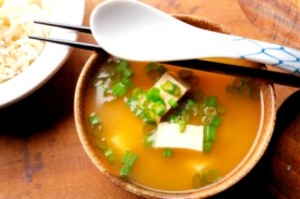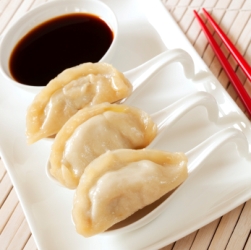 When someone says “Japanese food” does your mind automatically revert to a heaping platter of sushi? While there are plenty of healthy (and unhealthy) sushi options for anyone watching their diet, there is far more to the Japanese cuisine than sushi, which you can easily make from scratch at home.
When someone says “Japanese food” does your mind automatically revert to a heaping platter of sushi? While there are plenty of healthy (and unhealthy) sushi options for anyone watching their diet, there is far more to the Japanese cuisine than sushi, which you can easily make from scratch at home.
Unlike the American diet, notorious for its “super-size” portions, the Japanese diet is modest, with smaller portions. “Many Japanese people are taught to eat until they are just 80% full,” said Namiko Chen, author of the Japanese home cooking blog Just One Cookbook.
As with any cuisine, you can prepare lighter dishes at home than you would receive in a restaurant because you have complete control over how much salt, butter, cream or oil you add to your dish.
Be Diverse.
There is a lot more to the Japanese diet than sushi and seaweed salad, which are popular dishes on Japanese menus in America. Use new sauces, spices and condiments to flavor your favorite seafood, rice or protein
“Traditional Japanese cuisine has a lot of fiber and protein and most of food can be prepared low in calories and fat,” said Chen. “The Japanese diet typically includes a lot of wheat, soy beans, seaweed, mushrooms, seafood and vegetables.”
Some of Chen’s favorite dishes to make at home are miso soup, gyoza, chicken teriyaki, beef teriyaki, curry rice and stir-fried udon noodles (also called yaki udon).
Broil, Poach and Simmer
A lot of traditional Japanese dishes are simply prepared without a lot of added fat. Broiling, a simple alternative to grilling in which food is cooked with dry heat is a great way to prepare fish like lightly salted salmon or hamachi filet. Another popular cooking method, nikujaga, is the process of simmering or stewing meat and vegetables in a lightly sweetened soy sauce.
“Sunomono is a light salad flavored with rice wine vinegar, usually made without oil,” said Chen. “The Japanese are also known for lightly dressed dishes like spinach salad with seasame sauce.”
Choose Low Calorie Condiments
All the basic condiments for Japanese cooking, such as sake, soy sauce, mirin and miso are low in calories. Dashi, which is a fish based stock, is used for nearly every dish, including versatile and low-calorie miso soup.
 “Some of the most common low-calorie but high flavor that we often use are ginger, green onions, shiso leaves, shiitake mushrooms and bonito flakes,” said Chen. “Shiso is similar to mint or basil, while bonito flakes add rich, smoky flavor to dishes, especially soups.”
“Some of the most common low-calorie but high flavor that we often use are ginger, green onions, shiso leaves, shiitake mushrooms and bonito flakes,” said Chen. “Shiso is similar to mint or basil, while bonito flakes add rich, smoky flavor to dishes, especially soups.”
In America, some of the condiments and garnishes in Japanese restaurants do not even exist in Japan. Reika Yo Alexander, owner of EN Japanese Brasserie, told CNN Eatocracy that most Japanese food in America is a far cry from authentic.
“I was just in Japan for three weeks and didn’t have sushi even once,” said Alexander. “I know quite a few Japanese people who never eat sushi. Instead, in our home we ate fried chicken, grilled fish, curry, ramen and tons of cooked vegetables.”
Two of the most common sushi rolls in America’s Japanese restaurants, California rolls and Dragon rolls, are actually obscure in Japan. “Avocado and mayonnaise are featured in each of these rolls,” said Alexander. “Avocado does not grow in Japan and mayonnaise is never used there.”
Try cooking Japanese cuisine at home with these recipes:
Spinach Gomaae from Just One Cookbook
Daikon, Carrot, Persimmon and Pomegranate Suomono from La Fuji Mama
Beef Teriyaki Skewers from The Perfect Pantry
Japanese Stewed Beef & Vegetables from Just Hungry

